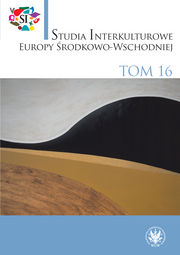Information about a product
| Edition: | 1 |
| Place and year of publication: | Warszawa 2023 |
| Publication language: | polski , angielski , białoruski , ukraiński |
| ISBN/ISSN: | 2544-3143 |
| Number of page: | 248 |
| Method of publication: | PDF |
| Size of the file: | 7,68 MB |
| Publication type: | Praca naukowa , Open access |
In volume 16 of the journal, in the History and Society section, Jerzy Gordziejew describes cultural policy in Grodno in the second half of the 1980s. Andrei Matsuk's publication, in turn, delves into the times of the First Polish Republic (Polish–Lithuanian Commonwealth) and discusses the instructions of the Volkovysk deputies' assembly during the reign of August III. Viktar Korbut's article discusses cooperation between Lithuanian and Belarusian national circles during the 1905-1907 revolution in Russia.
In the Language and Literature section, Jolanta Brzykca's article introduces the figure of Sergej Wojciechowski, who played an important role in the social life of the Russian diaspora in interwar Warsaw. Tetiana Trofymenko's text analyzes contemporary Ukrainian prose written after February 24, 2022. The use of metaphor in Russian economic terminology is addressed in Olga Lesicka's article.
In the Culture and Arts section, Olena Rosinska’s article looks at the use of the "woman-working-migrant" motif in Ukrainian, Polish, and Italian cinema. Alicja Bańczyk writes about Russian author Sophie de Ségur, who spread the Catholic faith in 19th-century France through children's literature. In turn, Betül C. Czerkawski juxtaposes the works of Fyodor Dostoevsky and Orhan Pamuk, referring to Samuel P. Huntington's concept of "torn countries." The significance of Henrikas Radauskas' poetry for Lithuanian literature is discussed in the article by Marcin Niemojewski. Marius Tărîță, meanwhile, analyzes the Slavic influence in Transylvania in the 15th and early 16th centuries.
The issue closes with review articles by Marek Olejnik and Joanna Kozłowska.
The publication is licensed under the Creative Commons Attribution-ShareAlike 3.0 Poland license (CC BY 3.0 PL) (full license available at: https://creativecommons.org/licenses/by/3.0/legalcode).
In the Language and Literature section, Jolanta Brzykca's article introduces the figure of Sergej Wojciechowski, who played an important role in the social life of the Russian diaspora in interwar Warsaw. Tetiana Trofymenko's text analyzes contemporary Ukrainian prose written after February 24, 2022. The use of metaphor in Russian economic terminology is addressed in Olga Lesicka's article.
In the Culture and Arts section, Olena Rosinska’s article looks at the use of the "woman-working-migrant" motif in Ukrainian, Polish, and Italian cinema. Alicja Bańczyk writes about Russian author Sophie de Ségur, who spread the Catholic faith in 19th-century France through children's literature. In turn, Betül C. Czerkawski juxtaposes the works of Fyodor Dostoevsky and Orhan Pamuk, referring to Samuel P. Huntington's concept of "torn countries." The significance of Henrikas Radauskas' poetry for Lithuanian literature is discussed in the article by Marcin Niemojewski. Marius Tărîță, meanwhile, analyzes the Slavic influence in Transylvania in the 15th and early 16th centuries.
The issue closes with review articles by Marek Olejnik and Joanna Kozłowska.
The publication is licensed under the Creative Commons Attribution-ShareAlike 3.0 Poland license (CC BY 3.0 PL) (full license available at: https://creativecommons.org/licenses/by/3.0/legalcode).

Update Required
To play the media you will need to either update your browser to a recent version or update your Flash plugin.













